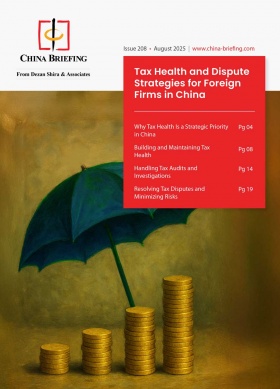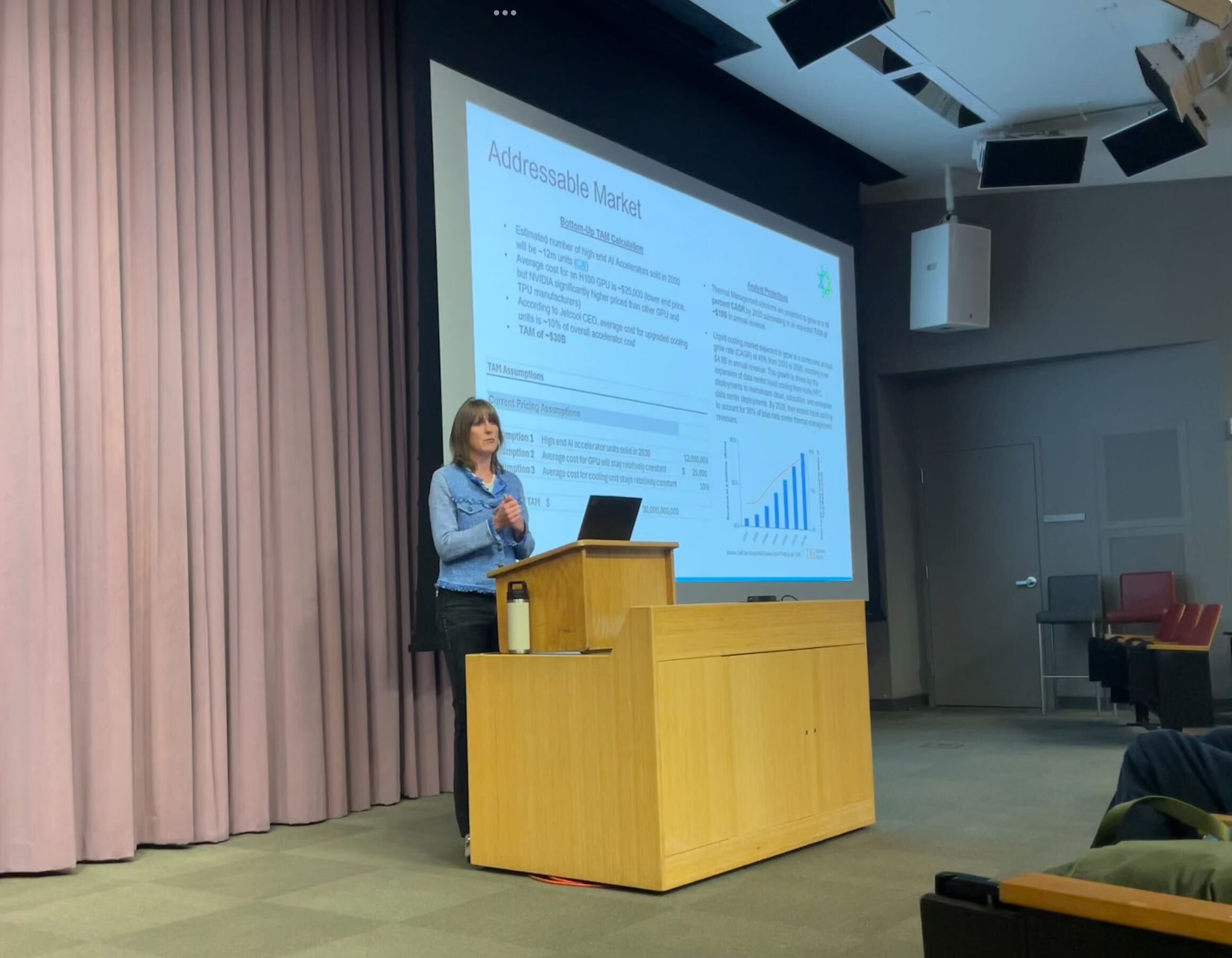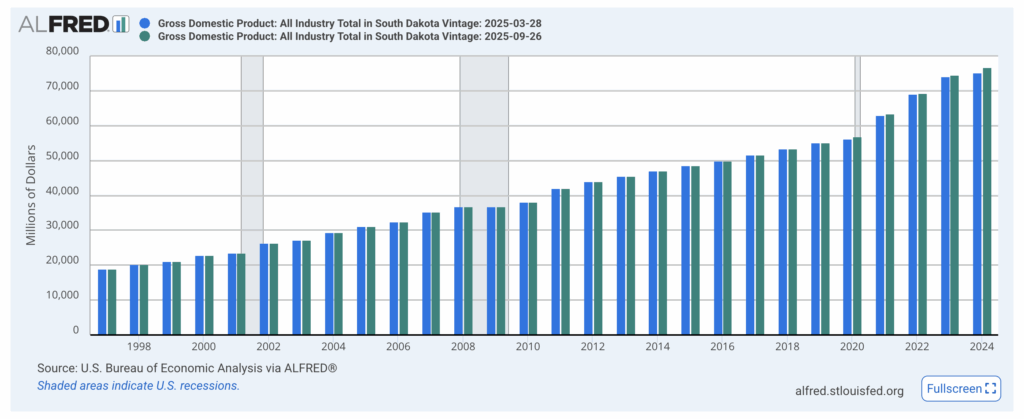China Provincial GDP Growth in H1 2025: The Road to 5% – China Briefing

Economic Performance Report: China Provincial GDP and Trade Analysis for H1 2025
This report provides an analysis of China’s provincial economic performance for the first half of 2025, based on Gross Domestic Product (GDP) and trade data from all 31 mainland regions. The findings are contextualized within the framework of the United Nations Sustainable Development Goals (SDGs), particularly SDG 8 (Decent Work and Economic Growth), SDG 9 (Industry, Innovation, and Infrastructure), and SDG 17 (Partnerships for the Goals). The data indicates that China is on track to meet its annual growth targets, driven by varied regional dynamics that reflect a national strategy balancing industrial growth with sustainable development objectives.
Provincial GDP Growth Analysis and Alignment with SDG 8
In H1 2025, China’s total GDP reached RMB 66.05 trillion (US$9.24 trillion), with an average year-on-year growth rate that supports the national target of approximately 5 percent for the year. This performance underscores progress toward SDG 8, with 22 of 31 provinces surpassing the national average growth rate. Regional disparities highlight diverse pathways to achieving sustainable economic growth.
High-Growth Regions: Catalysts for Sustainable Development
Several provinces demonstrated exceptional growth, driven by strategic investments in key sectors aligned with multiple SDGs.
- Tibet (7.2% growth): As the fastest-growing region, Tibet’s expansion reflects a balanced development model. Growth was recorded across primary (12.5%), secondary (7.0%), and tertiary (6.9%) sectors. This diverse growth contributes to SDG 2 (Zero Hunger) through agricultural expansion and SDG 8 through a burgeoning tourism sector, which saw expenditure rise 10.2 percent.
- Gansu (6.3% growth): The province’s growth was primarily powered by a 12.7% expansion in its manufacturing sector. This industrial momentum, particularly in non-ferrous metals and energy production, directly supports SDG 9 by strengthening industrial capacity and infrastructure.
- Hubei (6.2% growth): Hubei’s performance was characterized by a significant advancement in high-tech manufacturing, which grew by 14.4%. Surges in the production of lithium-ion batteries (62.1%) and electronic components (53%) illustrate a strategic shift towards innovative and sustainable industries, aligning with SDG 9 and SDG 12 (Responsible Consumption and Production). The services sector also expanded by 6.4%, contributing to diversified economic resilience.
Regions Undergoing Structural Adjustments for Long-Term Sustainability
Provinces with slower growth rates are navigating structural transitions aimed at fostering more sustainable and high-value economic models.
- Hainan (4.2% growth): The province is transitioning from a reliance on traditional sectors like real estate and tourism towards modern services and high-tech industries. This strategic pivot, while causing a temporary slowdown, is essential for building a more resilient and innovative economy in line with SDG 8 and SDG 9.
- Shanxi (3.8% growth): While below its annual target, Shanxi’s growth marks an improvement over 2024. Moderate expansion in its secondary (3.7%) and tertiary (3.8%) sectors indicates a steady but cautious transition toward a more diversified industrial and service-based economy.
Major Economic Provinces and Contribution to National Goals
China’s largest provincial economies remain central to its national development agenda, anchoring its overall economic stability.
- Guangdong: RMB 6.87 trillion GDP
- Jiangsu: RMB 6.69 trillion GDP
- Shandong: RMB 5 trillion GDP
- Zhejiang: RMB 4.5 trillion GDP
Trade Performance and Contribution to SDG 17
China’s national trade grew 2.9% year-on-year to RMB 21.79 trillion, with exports rising 7.2%. This resilience, particularly with Belt and Road Initiative partners, reinforces China’s commitment to SDG 17 (Partnerships for the Goals) by fostering global trade and economic cooperation.
Analysis of Key Trading Provinces
The eastern coastal provinces continue to dominate China’s trade landscape, though with varying internal dynamics.
- Guangdong: Remained the largest trading province with RMB 4.6 trillion in total trade. A modest 1.1% export growth alongside a 9.5% jump in imports reflects strong internal demand for resources to fuel its manufacturing base, a key component of global supply chains under SDG 12.
- Jiangsu, Zhejiang, and Shanghai: These regions reported double-digit export growth but negative import growth, suggesting robust external demand for their industrial output but potentially weaker internal consumption patterns.
Emerging Trade Hubs and Economic Diversification
Central and western provinces are increasingly contributing to national trade growth, indicating a successful geographical diversification of China’s economic engagement.
- Hubei: Total trade grew 28.4% year-on-year, with exports surging by 38.5%.
- Henan: Recorded a 26.2% increase in total trade, driven by a 38.8% rise in exports.
- Anhui: Total trade increased by 15.2%.
The performance of these emerging hubs demonstrates that industrial development is fostering both domestic demand and export capacity, contributing to more balanced regional growth in line with SDG 8.
Policy Outlook and Commitment to Sustainable Development Goals
The government’s policy framework for the second half of 2025 focuses on sustaining domestic momentum to achieve the annual 5% GDP growth target. The strategy emphasizes macroeconomic stability and targeted support for sectors crucial to long-term sustainable development.
National Policy Directives for Sustainable Growth
Following a State Council meeting, key government bodies outlined priorities that align directly with the SDGs.
- National Development and Reform Commission (NDRC): Priorities include cultivating high-tech and emerging industries, promoting high-level opening up, and advancing green and low-carbon development. These objectives directly support SDG 9, SDG 17, and SDG 13 (Climate Action).
- Ministry of Finance (MOF): The ministry will accelerate the issuance of special treasury bonds to stimulate industrial production and implement policies to support consumption in services like elderly care, childcare, and tourism, contributing to SDG 9, SDG 3 (Good Health and Well-being), and SDG 11 (Sustainable Cities and Communities).
Analysis of Sustainable Development Goals in the Article
1. Which SDGs are addressed or connected to the issues highlighted in the article?
-
SDG 8: Decent Work and Economic Growth
The entire article is centered on economic performance, specifically the Gross Domestic Product (GDP) growth rates of China’s provinces. It discusses national growth targets, provincial economic momentum, and sector-specific contributions to the economy, which are core components of SDG 8.
-
SDG 9: Industry, Innovation and Infrastructure
The article provides a detailed breakdown of industrial performance, highlighting the role of the manufacturing sector, heavy industries, and particularly high-tech manufacturing (e.g., electrical machinery, electronics, lithium-ion batteries) in driving GDP growth in provinces like Gansu and Hubei. This directly relates to the goal of fostering innovation and promoting sustainable industrialization.
-
SDG 17: Partnerships for the Goals
A significant section of the article is dedicated to China’s international trade, analyzing export and import data at both national and provincial levels. It mentions trade with ASEAN and Belt and Road markets, underscoring the importance of global trade partnerships for economic resilience, which is a key aspect of SDG 17.
-
SDG 12: Responsible Consumption and Production
The article mentions that the National Development and Reform Commission (NDRC) has prioritized promoting “green and low-carbon development” as part of its economic strategy for the second half of the year. This policy direction connects the discussed economic activities to the principles of sustainable production and resource management.
2. What specific targets under those SDGs can be identified based on the article’s content?
-
Target 8.1: Sustain per capita economic growth
This target aims to sustain economic growth in accordance with national circumstances. The article is fundamentally about measuring progress towards this target, detailing China’s national goal of “around 5 percent” GDP growth for 2025 and reporting that the country is “firmly on track” to meet it. It further breaks this down by province, showing how regions like Tibet, Gansu, and Hubei are contributing to this overall growth.
-
Target 9.2: Promote inclusive and sustainable industrialization
This target focuses on raising industry’s share of the GDP. The article directly addresses this by analyzing the growth of the secondary industry (manufacturing) in various provinces. For instance, it notes that Gansu’s 6.3% GDP growth was “powered primarily by its manufacturing sector, which expanded 12.7 percent,” and highlights Hubei’s 14.4% growth in high-tech manufacturing.
-
Target 17.11: Significantly increase the exports of developing countries
This target is concerned with boosting a country’s participation in global trade. The article provides explicit data on this, stating that China’s national exports rose “7.2 percent to RMB 13 trillion (US$1.8 trillion)” in H1 2025. It also details the export performance of key provinces, such as Hubei, where exports grew by a remarkable 38.5%.
-
Target 12.2: Achieve the sustainable management and efficient use of natural resources
This target is reflected in the policy priorities mentioned at the end of the article. The NDRC’s emphasis on “promoting green and low-carbon development” indicates a strategic shift to align future economic growth with sustainability principles, aiming for more efficient and environmentally conscious production and consumption patterns.
3. Are there any indicators mentioned or implied in the article that can be used to measure progress towards the identified targets?
-
Indicator for Target 8.1: Annual growth rate of real GDP
The article is replete with this indicator. It provides specific quantitative data, including:
- China’s national GDP growth target of “around 5 percent” for 2025.
- The national total GDP of RMB 66.05 trillion in H1 2025.
- Provincial year-on-year GDP growth rates, such as Tibet (7.2%), Gansu (6.3%), and Hubei (6.2%).
-
Indicator for Target 9.2: Manufacturing value added as a proportion of GDP
The article provides data points that serve as direct measures of manufacturing activity and its contribution to the economy. These include:
- Growth rate of the manufacturing sector in Gansu (12.7%).
- Growth rate of manufacturing output in Hubei (8.7%).
- Specific growth in high-tech manufacturing, such as the production of lithium-ion batteries (62.1%) and electronic components (53%) in Hubei.
-
Indicator for Target 17.11: Exports value and growth rate
The article uses export statistics as a key indicator of economic resilience. Specific indicators mentioned are:
- China’s total export growth of 7.2% year-on-year.
- Total export value of RMB 13 trillion (US$1.8 trillion).
- Provincial export growth rates, such as Hubei (38.5%) and Henan (38.8%).
-
Indicator for Target 12.2: Implementation of sustainable development policies
While not a quantitative metric, the article points to a qualitative indicator of progress. The mention of the NDRC’s policy priority to “promote green and low-carbon development” serves as an indicator of government commitment and the integration of sustainability into national economic planning.
4. Summary Table of SDGs, Targets, and Indicators
| SDGs | Targets | Indicators Identified in the Article |
|---|---|---|
| SDG 8: Decent Work and Economic Growth | Target 8.1: Sustain per capita economic growth. | Annual growth rate of real GDP (e.g., national target of “around 5 percent”; Tibet’s 7.2% growth). |
| SDG 9: Industry, Innovation and Infrastructure | Target 9.2: Promote inclusive and sustainable industrialization. | Growth rate of manufacturing sector and specific industries (e.g., Gansu’s manufacturing expanded 12.7%; Hubei’s high-tech manufacturing grew 14.4%). |
| SDG 17: Partnerships for the Goals | Target 17.11: Significantly increase the exports of developing countries. | Total export value and growth rate (e.g., national exports rose 7.2% to RMB 13 trillion; Hubei’s exports grew 38.5%). |
| SDG 12: Responsible Consumption and Production | Target 12.2: Achieve the sustainable management and efficient use of natural resources. | Qualitative policy indicator: Government commitment to “promote green and low-carbon development.” |
Source: china-briefing.com

What is Your Reaction?
 Like
0
Like
0
 Dislike
0
Dislike
0
 Love
0
Love
0
 Funny
0
Funny
0
 Angry
0
Angry
0
 Sad
0
Sad
0
 Wow
0
Wow
0

















































:focal(1500,1000)/https://media.globalcitizen.org/a6/9a/a69a4720-d8a1-4715-b596-18738d03c05c/rotary_polio_hero_image.jpg?#)






/countries/sri-lanka/photo-credit---dmc-sri-lanka.tmb-1200v.jpg?sfvrsn=dc298bcc_1#)

















